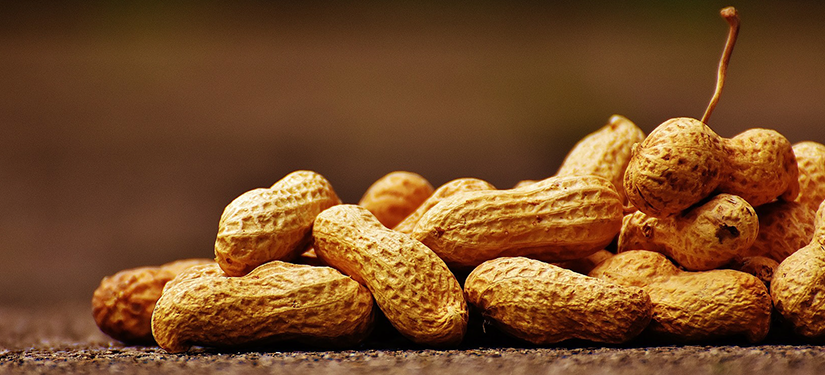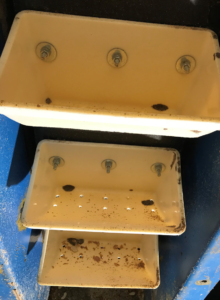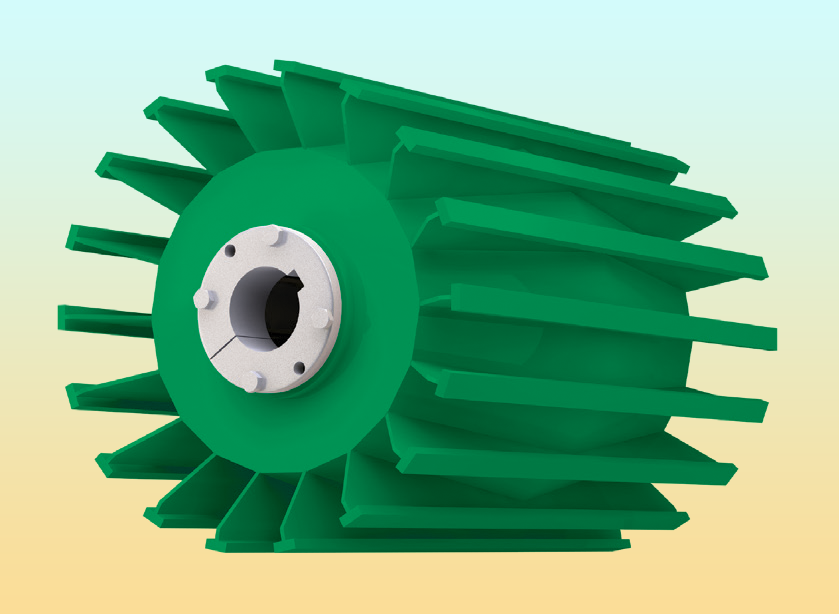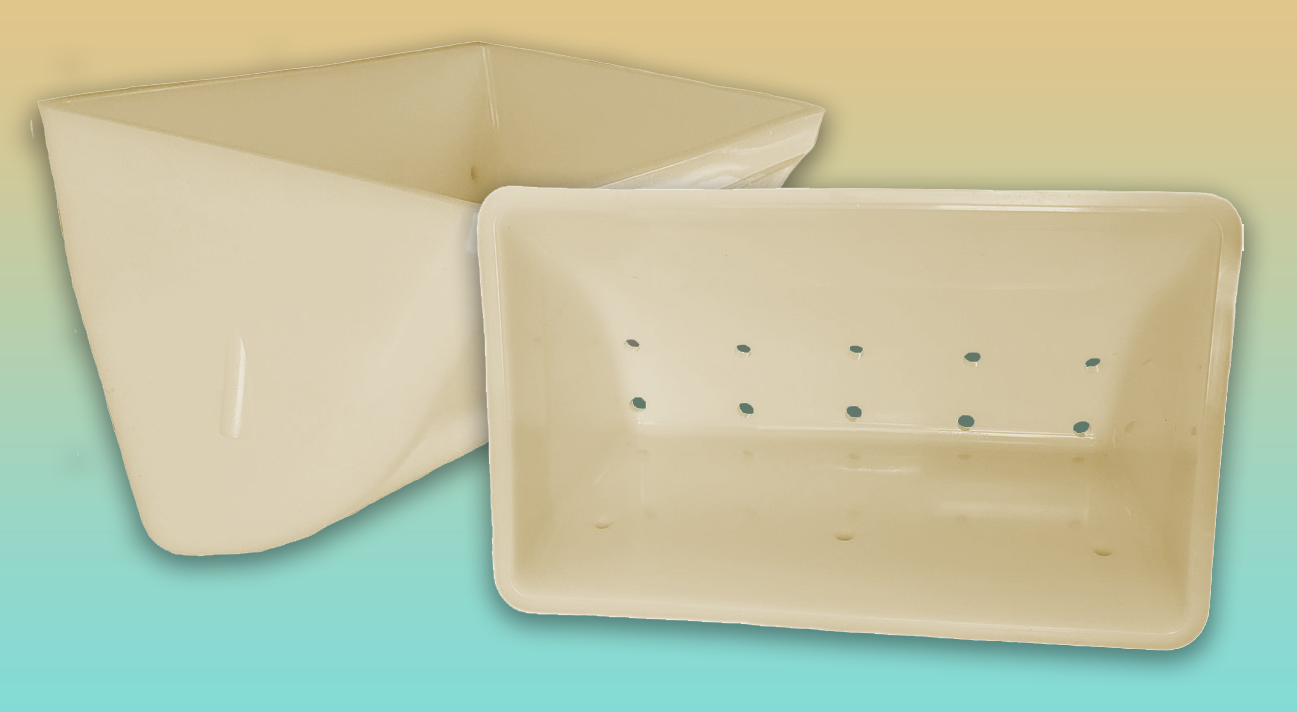
Case Study: Peanut processor reduces elevator downtime and maintenance
Mike Edwards
Features 4B Components buckets maintenance peanut processing production
The challenge at a major peanut processing facility was the bucket elevator not performing to capacity due to poor bucket fill and discharge.

Elevator with PVC25010” wide belting punched on 8 in. spacing for CC-S 9 X 5 Urethane Vent #3 buckets.
Peanut skins and meal stuck to the blue polyethylene buckets provided by the elevator manufacturer causing peanuts to spill out of the buckets resulting in reduced capacity.
The spilled peanuts would build up in the elevator boot where they would become ground up into a pasty meal that also stuck to the buckets.
The peanut meal build-up in the buckets reduced capacity and damaged the peanuts to the point that the elevator had to be shut down every three to four weeks to have all the buckets washed and the boot and head pulleys cleaned to reduce damage to the peanuts and improve system capacity. The elevator incorporated a solid drum style boot pulley that made the situation worse as peanuts fell between the boot and pulley.
Peanut Build-Up Inside Buckets
In this case study, the solution was to replace blue unvented CC-HD 9 X 5 Polyethylene buckets with 4B CC-S 9 x 5 Urethane elevator buckets incorporating vent holes. A boot pulley was also replaced with a self-cleaning wing style pulley.
Results from the 4B CC-S Vent #3 Urethane buckets installation virtually eliminated the need for bucket clean out and pulley washing. The anti-stick properties of urethane combined with the bucket venting helped prevent material build-up and improved bucket fill and product release.
The venting allows the air that would normally be trapped in the bucket to escape and even small peanuts including splits stay in the bucket until they reach the discharge point. Elevator downtime and maintenance was further improved with the installation of the wing pulley since peanuts were no longer trapped between belt and pulley.
This case study was contributed by 4B Components Ltd.
Print this page

